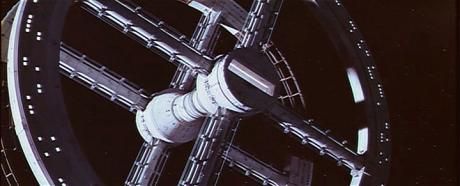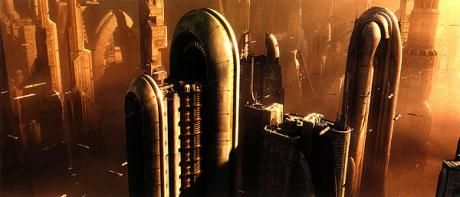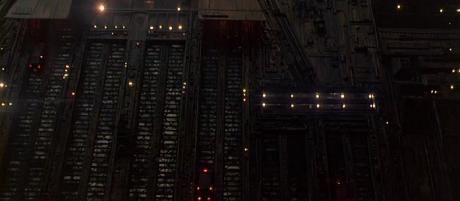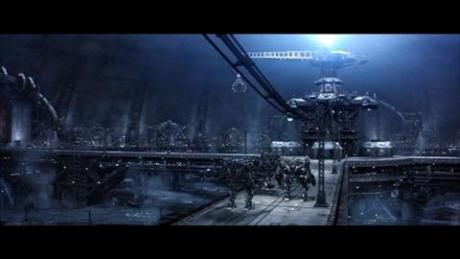The glossy future
According to science fiction, humanity should by now be exploring the depths of outer space in sleek, warp-powered vehicles. Instead of humble suburban houses, we should all be living in gargantuan towers, that soar up into the sky at impossible angles, and that burrow down deep into the Earth. Instead of growing old and sick, we should be staying young and healthy for an unnaturally long time, thanks to the wonders of modern medicine.
This fantastical Utopia of the 21st century, however, could hardly be further from our own reality. What's interesting to note, however, is that there are a whole bunch of amazing things in this world today, that would have been considered science fiction not that long ago; but that these things are quite different to what the prophecies of science and of popular fiction have foretold.
The general pattern, as far as I can tell, is that it's the fun, the colourful, and the sexy ideas that inevitably wind up being predicted; and that it's the useful, the mundane, and the boring ideas that actually come into existence, and that (to a greater or lesser extent) become part of the global furnishings in which we live.
Take the Internet, for example. As a basic idea, the Internet is not very sexy (how ironic!): it's just a whole bunch of computers, all around the world, that are able to communicate with each other. How about computers? Even less sexy: a pile of circuits and resistors, that can perform complex calculations real fast. The mobile phone (a.k.a. cell phone)? Big deal: a phone that you can carry in your pocket. These are all things that we take for granted every day. They're also all things that have radically changed the way we live. Only, not in the sexy way that we imagined.
Where are the laser guns? Where are the cool spaceships? Where are the zero-gravity shoes, the holographic worlds, and the robotic people? When can you beam me up? Where's the sexy stuff? Sure, my iPod™ looks cool, but chopping my foot off and swallowing a pill to make it grow back would be so much cooler.
Flavours of prediction
Futuristic predictions come in two main flavours: the sleek, awe-inspiringly glossy flavour; and the crude, depressingly 'realistic' flavour. The science fiction movie genre has gone through both these phases. In the earlier years (the 60s and 70s), the genre seemed to favour the former flavour (the futuristic Utopia); and in the latter years (the 80s and 90s), it seemed to favour the latter flavour (usually in the form of a post-disaster world).
Take, for example, this shot from the classic Stanley Kubrick film, 2001: A Space Odyssey:

This is a beautiful machine, full of graceful curves and subtle gradients - very much compatible with the elegant classical music to which it 'waltzes'. This kind of spaceship is the perfect example of a 'glossy' future - that is, one that has been made to look perfect and insatiable. Here's another example of a future that's been glossed up:

This shot is from Star Wars: Episode II - Attack of the Clones. I'm actually cheating a bit here, because Star Wars is technically set 'a long time ago, in a galaxy far away'; and also because Episode II was made recently, not in the 60s or 70s. Also, Star Wars has traditionally had less glossy-looking scenery than this. But nevertheless, this shot gets the point across pretty well: the future is a gleaming city of spires and curvaceous arches, with thousands of little shuttles zooming through the sky.
And now for something completely different, here's a shot from Ridley Scott's film Blade Runner:

This is a totally different prediction of the future: not attractive, but grotesque; not full of life, but devoid of it; not designed, but mass-manufactured. This is not just a different image, but a whole different philosophy on how to foretell the future. Similar things can be said about this shot from The Matrix Reloaded:

While this one isn't quite so obviously blocky and noirish as the Blade Runner shot, it still looks more 'realistic' than 'futuristic', if you know what I mean. It's got that industrial, scrap-metal-dump-site kind of look about it.
Conclusions
So, which of these flavours of prediction is accurate? Will the future continue to disappoint, as it has up until now, or will it live up to its glossy predictions?
As I said earlier, it's the cool ideas that get predicted, and the practical ideas that actually happen. Bearing that in mind, I think that many of the cool ideas from science fiction will become a part of our real lives in the not-too-distant future (in fact, many of them are already), but not in the sexy way that they've been portrayed by the mass media.
Many of the ideas that futurists have come up with will never (foreseeably) actually happen, because they're simply too impractical to implement in the real world, or because implementing them is way beyond our current capacity in the realms of science. And, as we've seen in the past few decades, many useful but mundane innovations will continue to spring up, without ever having been predicted by even the most talented of modern prophets. Maybe such ideas are just too simple. Maybe they're too boring. Maybe they're just easier to sell in desktop form, or in pocket form, than in panoramic wide-screen digital surround-sound form.
I don't guarantee that the future will be any glossier than the present. The future might not be as jazzed up as Hollywood has made it.
But one thing's for sure: the future will be cool.